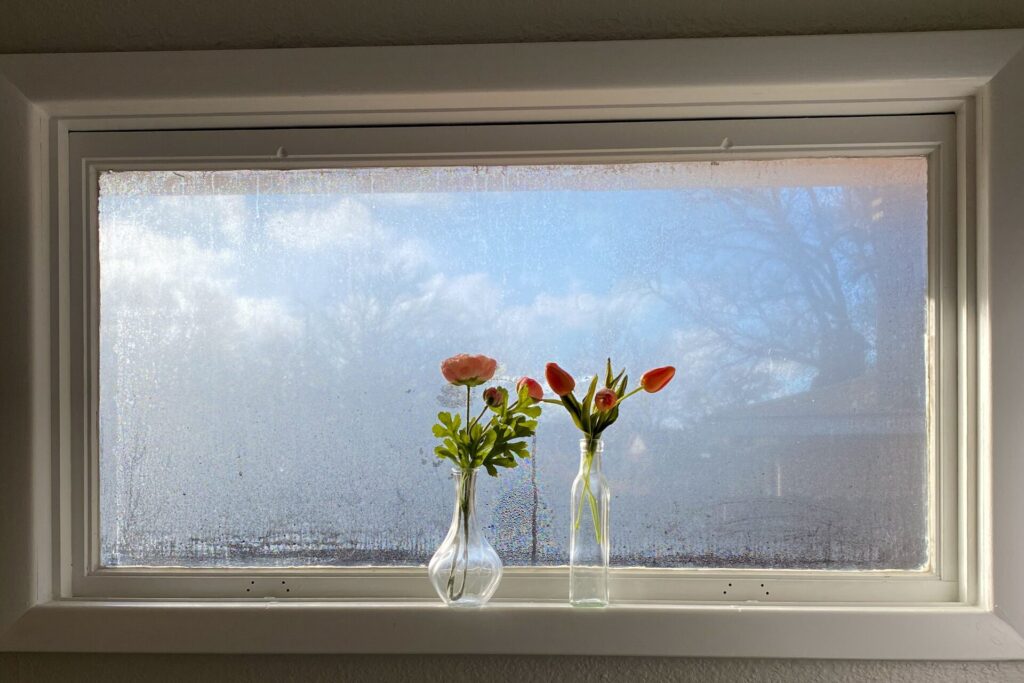Condensation Resistance Factor of Windows
Condensation is a common problem that occurs in residential structures, particularly in coastal areas like Long Island and the Hamptons where high humidity levels and temperature fluctuations can exacerbate the issue. The formation of condensation on windows can lead to damage of the window frame, mold growth, and eventually structural damage. This problem can be…
Morgan Poulos Keating, PE
June 28, 2023
4 mins read

Condensation is a common problem that occurs in residential structures, particularly in coastal areas like Long Island and the Hamptons where high humidity levels and temperature fluctuations can exacerbate the issue. The formation of condensation on windows can lead to damage of the window frame, mold growth, and eventually structural damage. This problem can be addressed by understanding and utilizing the Condensation Resistance Factor when selecting windows and glazing systems. In this article, we will discuss the causes of condensation, it’s implications, and how our mechanical engineers use Condensation Resistance Factor to select optimal windows to mitigate it.
Condensation in Residential Structures
Causes of Condensation
Condensation occurs when the temperature of a surface falls below the dew point temperature of the surrounding air. This happens when warm, humid air comes into contact with a cooler surface, such as a window. In coastal areas like the Hamptons, high humidity levels can exacerbate the condensation problem. Additionally, temperature differences between the interior and exterior of a building can also contribute to the formation of condensation. Factors such as poor ventilation, leaks, and inadequate insulation can also increase the likelihood of condensation.
Condensation Implications
The formation of condensation on windows can lead to several issues. Aesthetically, condensation can make a room appear damp and uninviting. Structurally, it can lead to damage of the window frame and even the surrounding wall. Condensation can also lead to mold growth, which can be a health hazard. Furthermore, condensation can reduce the energy efficiency of a building as it increases the amount of heat lost through windows.

Condensation Resistance Factor and Considerations
The National Fenestration Rating Council has developed a rating system to measure the ability of a window to resist condensation. This rating is known as the Condensation Resistance Factor (CRF). CRF is determined by simulating/testing the amount of condensation that forms on a window at various temperature and humidity levels. The higher the CRF, the better the window is at resisting condensation.
Window manufacturers can achieve higher Condensation Resistance Factor ratings by using various techniques. For example, using a triple pane window instead of a double pane window can significantly improve the Condensation Resistance Factor of the window. The additional pane of glass provides an additional layer of insulation, which helps to reduce the temperature difference between the interior and exterior of the building. Additionally, Low-E coatings, applied to the glass to reduce heat transfer, can also improve the Condensation Resistance Factor of a window. Low-E coatings reflect infrared radiation, which reduces the amount of heat transferred through the window. This can help reduce the temperature difference between the interior and exterior of the building, in turn reducing the formation of condensation on the windows.

Engineering Considerations
When selecting windows for a coastal residence in the Hamptons, one should consider the specific environment and sources of condensation. For example, windows in shaded areas will typically require a higher CRF due to the lower temperature difference between the interior and exterior. Additionally, windows facing the ocean can benefit from a higher CRF due to higher humidity levels.
Other factors to consider include the window glazing, the number of panes of glass, and the type of gas fill between the panes. Low-E coatings, as mentioned earlier, are also an effective way to improve the CRF.
At Dilandro Andrews Engineering, our mechanical engineering team can help determine what Condensation Resistance Factor is needed for each surface to prevent unwanted foggy windows. Our analysis factors in the average indoor/outdoor temperatures, humidity, and dew point. For tips on preventing and mitigating condensation once construction has been completed, check out this post from Marvin.